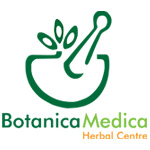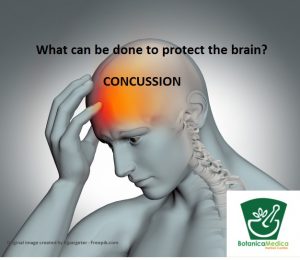The debilitating short-term and long-term effects of concussion (also known as traumatic brain injury or traumatic head injury) have been in the spotlight again. The recent concussion to champion AFL player Robbie Gray again highlights the inherent dangers involved in contacts sports, and raises concern about how quickly players return to the game.
Is there anything that can be done to reduce the short and long term effects of concussion and improve recovery?
Whilst avoiding injury is always the best approach, this is not always possible. Some occupations or hobbies increase the likelihood of concussions (e.g. contact sports, military, police, security, etc.).
The short term effects of concussion include headache, dizziness, memory loss, insomnia, sleep apnoea and difficulty in concentration. Whilst these usually disappear over time, there is increasing concern about the long term effects, especially if multiple concussions occur in your sporting career.
Although the acute effects often resolve on 10-14 days, damaging secondary effects often persist, despite the appearance of a full recovery. Secondary effects can include brain cell inflammation, alteration of blood flow within the brain, diminished energy production within the brain, and a damaged ‘leaky’ blood brain barrier. Unfortunately the brain is not designed to control inflammation and has much less capacity to do this compared with other organs. Even more disturbing is the high rate of pituitary function loss. Over 50% of sufferers develop pituitary hormone deficiencies one year post-concussion. The pituitary gland is responsible for controlling the production of thyroid, stress, inflammation and sex hormones. The damaging effects on the pituitary gland further impair the ability of the brain to heal.
Research to date shows concussions may cause or contribute to neuro-degenerative conditions such as chronic depression, fear, anxiety, memory and concentration loss, chronic mood changes, Alzheimer’s, other dementias and Parkinson’s disease. The likelihood of these effects increases with the more concussions experienced. These concussions may be minor, or more dramatic (as in the Robbie Gray incident), but the cumulative effects also appear a concern even in minor concussions. Younger people appear to be especially susceptible to the effects of concussion, perhaps because the brain is in development.
A recent study highlights these dangers, especially in younger people. A study using brain MRIs in young teen ice hockey players revealed that:
Changes in brain function and brain region connectivity persisted well after players’ clinical assessment scores had returned to normal and they had been cleared to return to play. Ongoing white matter maturation may make adolescent athletes particularly vulnerable to brain injury, and they may require extended recovery periods. The consequences of early brain injury for ongoing brain development and risk of more serious conditions such as second impact syndrome or neural degenerative processes need to be elucidated. (Manning et al., 2017, Para. 4)
The study showed persistent MRI-detectable neuronal changes that reflect long-lasting damage to white matter fibres and compensatory recovery mechanisms.
This highlights that adverse effects are still occurring within the brain, despite a seemingly normal. If a player returns to activities without a full recovery they may have increased susceptibility to injury and may be at risk of serious conditions such as second impact syndrome. So often people are returning to sport or work before their brain has fully recovered.
It appears that some people are also genetically pre-disposed to the ill effects of concussion.
So is there anything that can be done to reduce the short and long term effects of concussion and improve recovery?
The answer is YES!
Various medical trials of currently available prescription medications have been disappointing, showing no treatments that improve neurological outcomes after concussion and that various pharmaceutical treatments may mask symptoms of concussion and are therefore not recommended.
There are other avenues available which do show promise.
A number of herbs, nutritionals and dietary interventions have been shown in some human and many animal studies to produce substantial improvements.
These include the herbs such as Curcumin (turmeric) – enhanced absorption forms, Boswellia, Bupleurum, Bacopa, Ginkgo, Rosemary.
Nutritionals including DHA, resveratrol, tocopherol/tocotrienols, creatine, acetyl-L-carnitine, ubiquinol, N-acetyl cysteine, Magnesium, Vitamin D, lipoic acid, palmitoylethanolamine, NAD, quercetin, MCTs.
It also appears that diet can play a role in both reducing the ill effects of concussion and speeding up recovery. Dietary choices that have been shown to reduce Alzheimer’s offer a sensible approach to reduce the risk of adverse effects from concussion, including the Mediterranean MIND diet and versions of a ketogenic diet. Animal studies have shown a high fat and sugar diet worsened outcome after traumatic brain injury and that calorie restriction improved resilience to the effects of brain injury.
Whilst athletes may not want to employ calorie restriction, some supplements mimic the effects of calorie restriction and would be expected to offer the same protection. Calorie restriction works by increasing the activity of specific genes that promote neuronal growth and repair, and therefore can help increase resilience to injury and to improve recovery.
It is unlikely that a single therapeutic agent will be sufficient to improve outcomes in concussion. It is necessary to employ combinations that are synergistic, to address the variety of disturbances occurring in the brain after concussion.
Treatment should always be individualised and take into account a person’s health history and medical situation. The benefits of taking targeted high quality supplements, at therapeutic doses along with specific dietary interventions can ensure the best recovery possible and also reduce the effects of future concussions.
Craig Wainright
Naturopath
Botanica Medica Herbal Centre
References
Neurology. 2017 Nov 21; 89(21): 2157–2166.doi: 10.1212/WNL.0000000000004669 PMCID: PMC5696642 PMID: 29070666 Multiparametric MRI changes persist beyond recovery in concussed adolescent hockey players Kathryn Y. Manning, MSc, Amy Schranz, BMSc, Robert Bartha, PhD, Gregory A. Dekaban, PhD, Christy Barreira, BSc, Arthur Brown, PhD, Lisa Fischer, MD, Kevin Asem, MD, Timothy J. Doherty, MD, PhD, Douglas D. Fraser, MD, PhD, Jeff Holmes, PhD, and Ravi S. Menon, PhD
Am J Med. 2005 Dec;118(12):1416. The natural history of post-traumatic hypopituitarism: implications for assessment and treatment. Agha A, Phillips J, O’Kelly P, Tormey W, Thompson CJ.
Neurobiol Dis. 2015 Jan;73:1-11. doi: 10.1016/j.nbd.2014.09.003. Epub 2014 Sep 28. Diet, age, and prior injury status differentially alter behavioral outcomes following concussion in rats. Mychasiuk R, Hehar H, van Waes L, Esser MJ.
Front. Behav. Neurosci., 05 February 2015 Dietary intake alters behavioral recovery and gene expression profiles in the brain of juvenile rats that have experienced a concussion. Richelle Mychasiuk*, Harleen Hehar, Irene Ma and Michael J. Esser
Behav Brain Res. 2017 Jul 28;331:135-142. doi: 10.1016/j.bbr.2017.04.024. Epub 2017 May 8. Short-term caloric restriction exerts neuroprotective effects following mild traumatic brain injury by promoting autophagy and inhibiting astrocyte activation. Liu Y, Wang R, Zhao Z, Dong W, Zhang X, Chen X, Ma L.
J Neurosci Res. 2018 Jun;96(6):1080-1092. doi: 10.1002/jnr.24210. Epub 2018 Jan 30.Ubiquinol treatment for TBI in male rats: Effects on mitochondrial integrity, injury severity, and neurometabolism. Pierce JD1, Gupte R2, Thimmesch A1, Shen Q1, Hiebert JB1, Brooks WM3, Clancy RL1, Diaz FJ4, Harris JL5.
J Crit Care. 2018 Jun;45:128-132. doi: 10.1016/j.jcrc.2018.01.029. Epub 2018 Feb 9.A pilot trial of l-carnitine in patients with traumatic brain injury: Effects on biomarkers of injury. Mahmoodpoor A1, Shokouhi G2, Hamishehkar H3, Soleimanpour H4, Sanaie S5, Porhomayon J6, Rasouli F1, Nader ND7
J Psychoactive Drugs. 2011 Jan-Mar;43(1):1-5. Doi: 10.1080/02791072.2011.566489. Reversing brain damage in former NFL players: implications for traumatic brain injury and substance abuse rehabilitation. Amen DG1, Wu JC, Taylor D, Willeumier K.
Dev Neurosci. 2010;32(5-6):480-7. doi: 10.1159/000323178. Epub 2011 Jan 12.Neuroprotection by acetyl-L-carnitine after traumatic injury to the immature rat brain. Scafidi S1, Racz J, Hazelton J, McKenna MC, Fiskum G.
Neurochem Res. 2017 Jun;42(6):1661-1675. doi: 10.1007/s11064-017-2288-7. Epub 2017 May 16. L-Carnitine and Acetyl-L-carnitine Roles and Neuroprotection in Developing Brain. Ferreira GC1,2, McKenna MC3,4
Neurosci Lett. 2016 May 27;622:95-101. doi: 10.1016/j.neulet.2016.04.048. Epub 2016 Apr 22. Rosemary extract improves cognitive deficits in a rats model of repetitive mild traumatic brain injury associated with reduction of astrocytosis and neuronal degeneration in hippocampus. Song H1, Xu L2, Zhang R3, Cao Z4, Zhang H2, Yang L5, Guo Z5, Qu Y2, Yu J6.
Mol Med Rep. 2018 Jun;17(6):7859-7865. doi: 10.3892/mmr.2018.8801. Epub 2018 Mar 28. Quercetin protects rat cortical neurons against traumatic brain injury. Du G1, Zhao Z2, Chen Y1, Li Z1, Tian Y1, Liu Z1, Liu B1, Song J1.
Inflammation. 2018 Aug;41(4):1182-1193. doi: 10.1007/s10753-018-0765-z. Docosahexaenoic Acid (DHA) Provides Neuroprotection in Traumatic Brain Injury Models via Activating Nrf2-ARE Signaling. Zhu W1, Ding Y2, Kong W3, Li T3, Chen H3.
Acta Pharmacol Sin. 2017 Feb;38(2):168-181. doi: 10.1038/aps.2016.130. Epub 2016 Dec 26. SIRT1 plays a neuroprotective role in traumatic brain injury in rats via inhibiting the p38 MAPK pathway. Yang H1,2, Gu ZT1,2, Li L1,2, Maegele M3, Zhou BY2, Li F1, Zhao M2, Zhao KS2
Neurochem Int. 2015 Aug;87:85-91. doi: 10.1016/j.neuint.2015.06.003. Epub 2015 Jun 6. Alpha lipoic acid inhibits neural apoptosis via a mitochondrial pathway in rats following traumatic brain injury. Wei W1, Wang H2, Wu Y3, Ding K3, Li T3, Cong Z3, Xu J3, Zhou M3, Huang L1, Ding H1, Wu H3
Biotech Histochem. 2015 Apr;90(3):206-15. doi: 10.3109/10520295.2014.977950. Epub 2014 Nov 25. The effects of α-lipoic acid on immature rats with traumatic brain injury. Ozbal S1, Cankurt U, Tugyan K, Pekcetin C, Sisman AR, Gunduz K, Micili SC.
Brain Behav Immun. 2012 Nov;26(8):1310-21. doi: 10.1016/j.bbi.2012.07.021. Epub 2012 Aug 3. Administration of palmitoylethanolamide (PEA) protects the neurovascular unit and reduces secondary injury after traumatic brain injury in mice. Ahmad A1, Crupi R, Impellizzeri D, Campolo M, Marino A, Esposito E, Cuzzocrea S.
J Cereb Blood Flow Metab. 2008 Jul;28(7):1341-52. doi: 10.1038/jcbfm.2008.28. Epub 2008 Apr 16. Incensole acetate: a novel neuroprotective agent isolated from Boswellia carterii. Moussaieff A1, Shein NA, Tsenter J, Grigoriadis S, Simeonidou C, Alexandrovich AG, Trembovler V, Ben-Neriah Y, Schmitz ML, Fiebich BL, Munoz E, Mechoulam R, Shohami E
J Lipid Res. 2014 Dec;55(12):2450-7. doi: 10.1194/jlr.R046706. Epub 2014 Apr 10. The collective therapeutic potential of cerebral ketone metabolism in traumatic brain injury. Prins ML1, Matsumoto JH2.
Mol Med Rep. 2018 Jun;17(6):7859-7865. doi: 10.3892/mmr.2018.8801. Epub 2018 Mar 28.Quercetin protects rat cortical neurons against traumatic brain injury. Du G1, Zhao Z2, Chen Y1, Li Z1, Tian Y1, Liu Z1, Liu B1, Song J1
Artwork created in Microsoft Paint.


Recent Comments